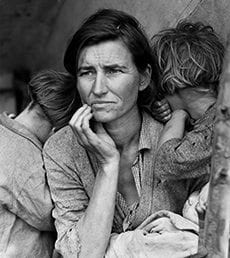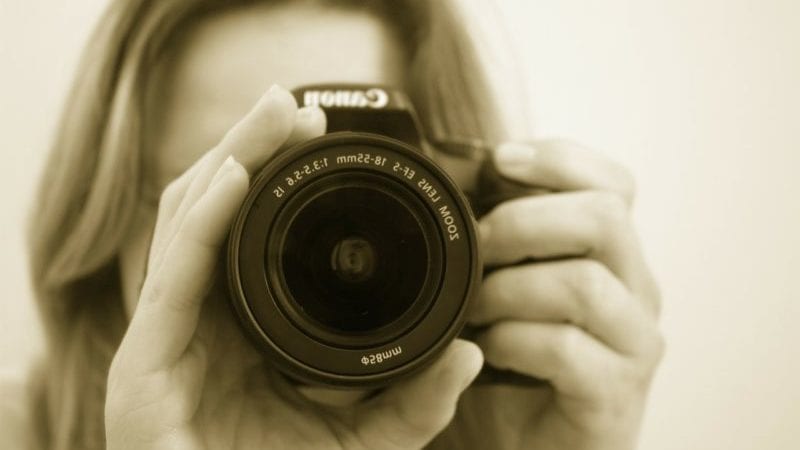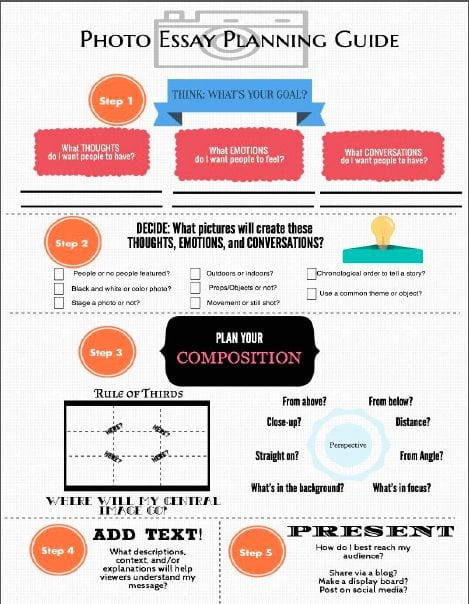Your students, if they’re anything like mine, love to communicate through images—photos on Instagram, GIFs shared in a text, photo stories on Snapchat. And yet, so much of our conversation in school revolves around words. Understanding text is critical to students’ success now and in the future. But do we also help students identify, read and understand images in order to become literate in the visual language that is all around us? The photo essay can be a great middle or high school assignment that will have strong appeal and grow your students’ writing skills.
What Is a Photo Essay?
For those who aren’t familiar with the term “photo essay,” have no fear. A photo essay, in its simplest form, is a series of pictures that evokes an emotion, presents an idea or helps tell a story. You’ve been exposed to photo essays for your entire life—possibly without even knowing it. For example, you may have seen Dorothea Lange’s Migrant Mother:

An iconic image of the Great Depression, this picture, along with Lange’s other gripping photos, helped Americans better understand the effects of poverty in California as well as across the nation. Migrant Mother is one of countless photographs that helped persuade, influence or engage viewers in ways that text alone could not.
Photo essays can feature text through articles and descriptions, or they can stand alone with simple captions to give context. The versatility of photo essays has helped the medium become a part of our culture for centuries, from the American Civil War to modern environmental disasters like the 2010 earthquake in Haiti. This versatility is also what makes the photo essay a great educational asset in classrooms today; teachers can use them in any content area. Math students can use them to show a geometric concept in real life. Science students can document a chemistry process at home. Auto students can photograph the technique—and joys and frustrations—of learning a new procedure.
So, where does a teacher begin? Read further for tips and ideas for making photo essays a part of your teaching toolbox.
Start With Photos
Introducing photo essays as a means of changing lives and changing society can hook student interest in the medium. Begin by simply showing pictures and letting students discuss their reactions. Consider this famous photo of the field at Antietam during the Civil War. Share some of the photos from this collection from CNN of 25 of the Most Iconic Photographs or this list of 50 Influential Photographs That Changed Our World.
Each of these photographs stirs emotion and sends our minds searching for answers. As a warm-up assignment or series of assignments, have students choose (or assign randomly) a photograph to write about. What’s the story? Why did this happen? Who was involved?
DIY Photographs
Before giving a formal photo essay assignment, give students an opportunity to practice and receive feedback. Consider presenting students with several open-ended, ungraded challenges like “For class tomorrow, take a photo that depicts ‘Struggle.’” Other possible photo topics: chaos, frustration, friendship, school. Have students email you their photo homework and share it as a slideshow. Talk about the images. Do they convey the theme?
You can give examples or suggestions; however, giving too many examples and requirements can narrow students’ creativity. The purpose of this trial run is to generate conversation and introduce students to thinking like photographers, so don’t worry if the photos aren’t what you had in mind; it’s about getting feedback on what the student had in mind.
Technique 101
Even though the goal of a photo essay is to influence and create discussion, there is still benefit in giving students a crash course on simple photography concepts. Don’t feel like you have to teach a master-level course on dark-room development. Even a simple overview on the “Rule of Thirds” and the importance of perspective can be enough to help students create intentional, visually stirring photographs.
You can teach these ideas directly or have students do the work by researching on their own. They have most likely seen hundreds of movies, advertisements and photos, so these lessons are simply labeling what they’ve already experienced. Having some knowledge of composition will not only help students improve their visual literacy, it will also help empower them to take photos of their own.
Choose Your Purpose
Are students telling their own stories of their neighborhoods or their families? Are they addressing a social issue or making an argument through their images and text? A photo essay could be a great assignment in science to document a process or focus on nature.
If you are just getting started, start out small: Have students create a short photo essay (two to five images) to present a topic, process or idea you have been focusing on in class. Here’s a Photo Essay Planning Guide to share with your students.
With pictures becoming a dominant medium in our image-filled world, it’s not a question of if we should give students practice and feedback with visual literacy, it’s a question of how. Photo essays are a simple, engaging way to start. So, what’s your plan?


